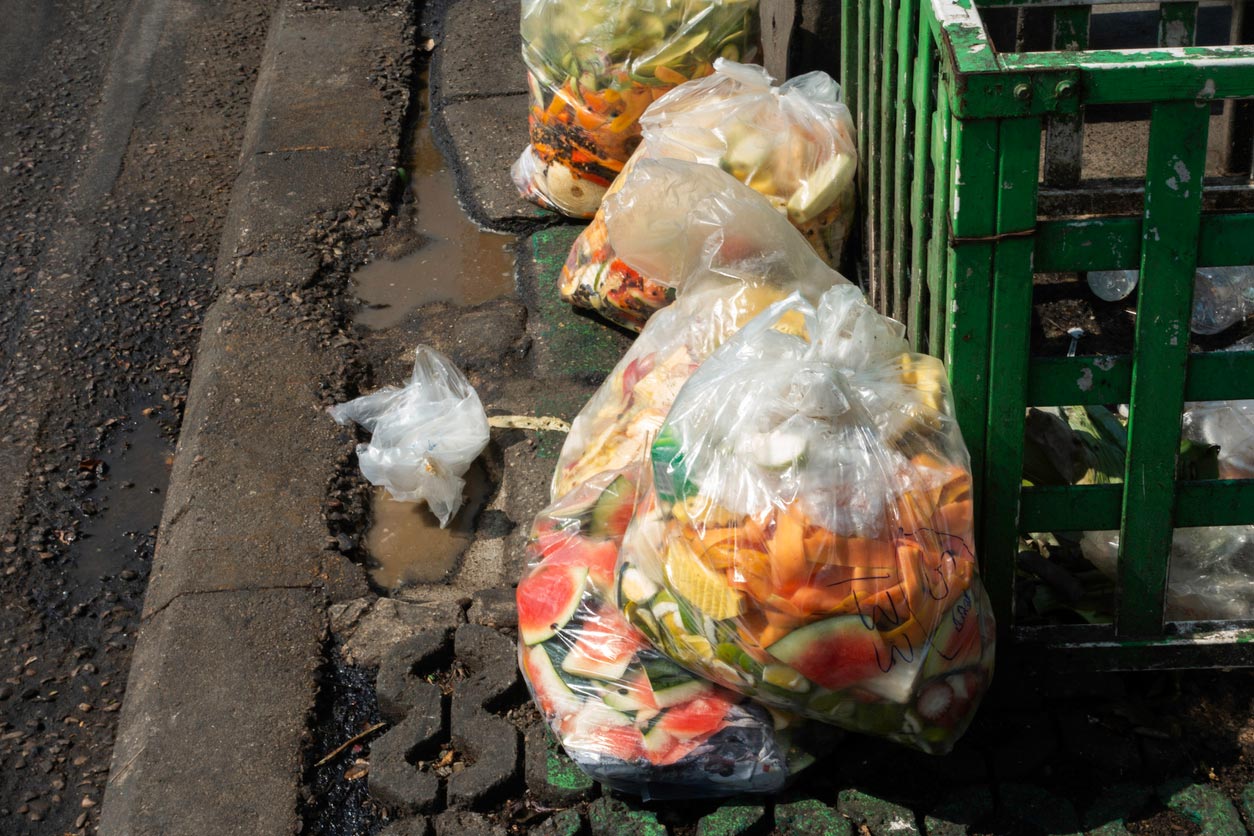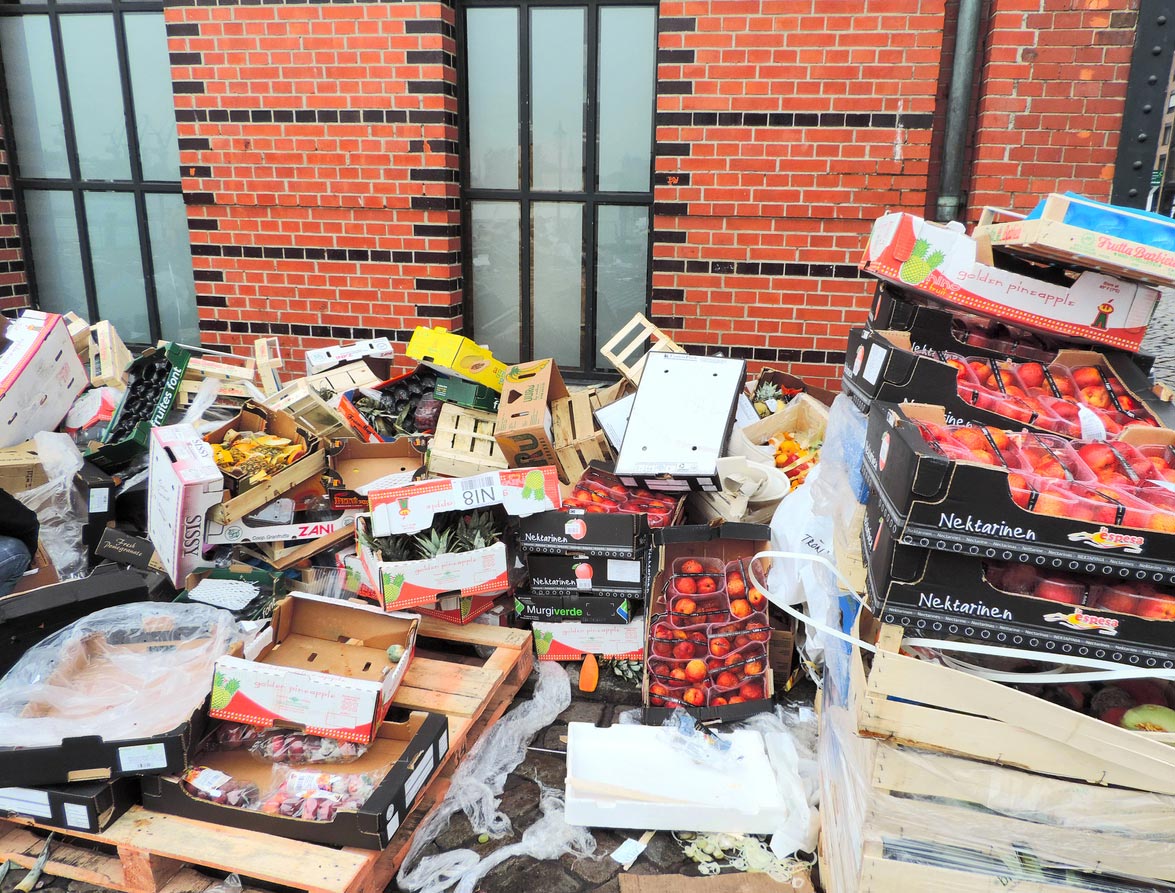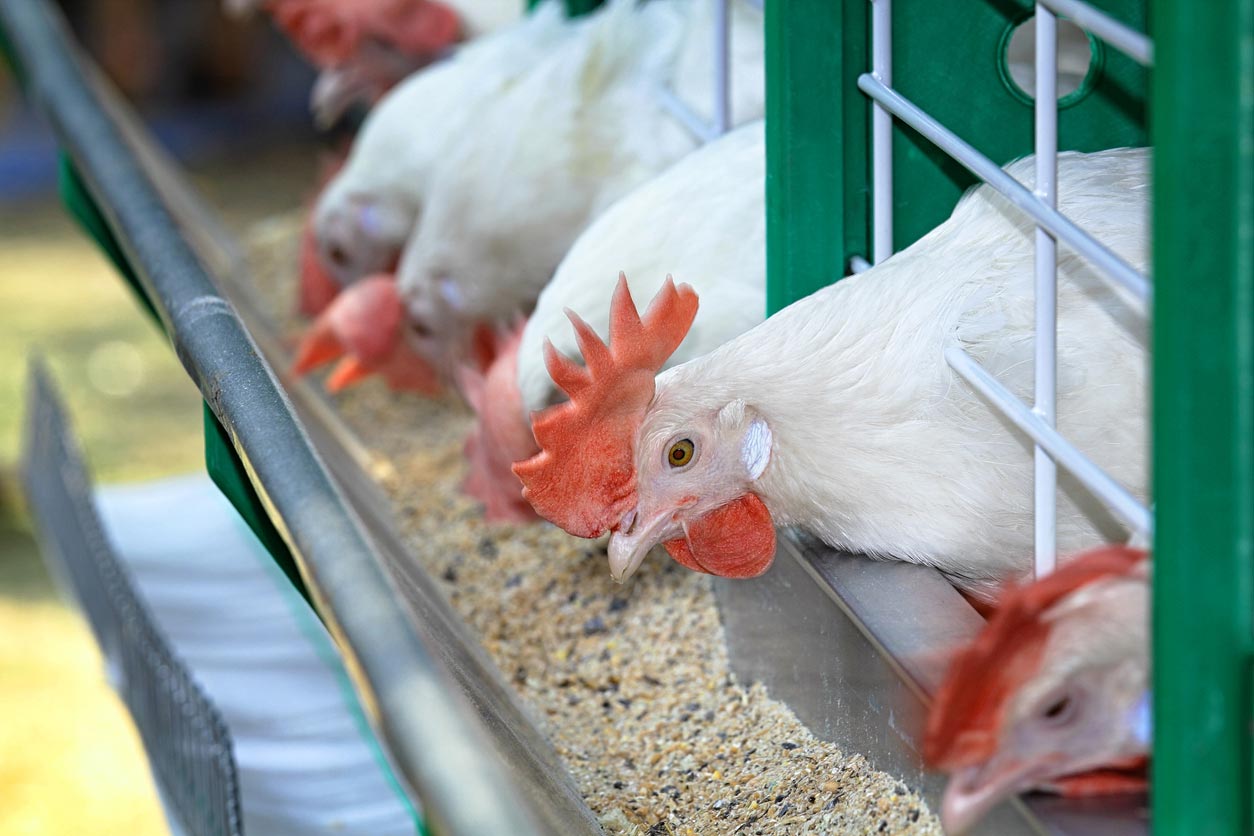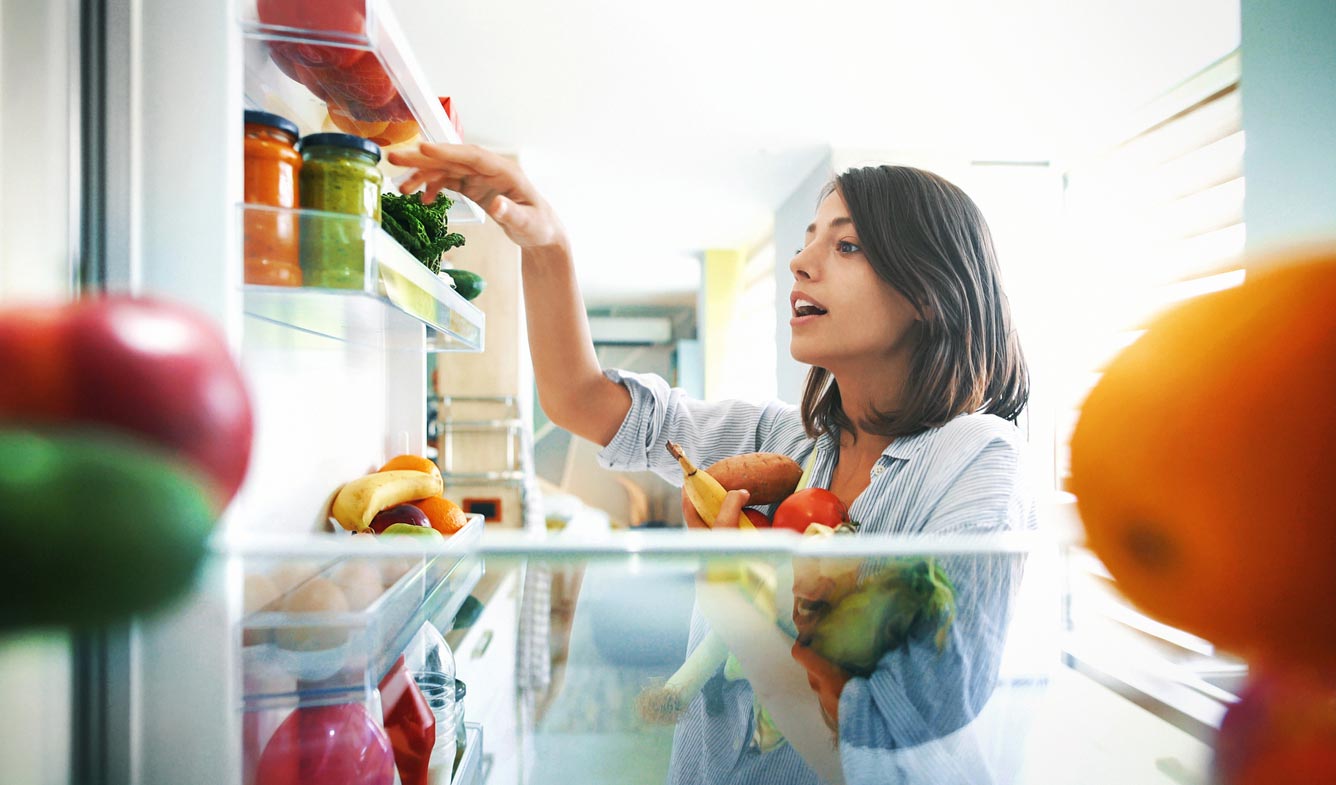In many cultural traditions, there are stories of magical vessels that produce an endless supply of food or drink. Hindu mythology features the Akshayapatra, a bowl that never fails to produce unlimited food. In Newfoundland, children were told stories of a magic tablecloth that was always full. Some Irish legends identify the Holy Grail as a food-giving vessel.
Our modern food supply can look a lot like one of those magic vessels. Supermarkets are stocked with a seemingly endless supply of everything we can imagine eating. Restaurants with menus the size of Russian novels do a brisk trade 365 days a year. And the technologies of the global supply chain can provide us with any kind of food any season of the year. What’s not to like?
The problem is, our view of food as unlimited has led many of us to adopt some extremely wasteful habits. Roughly one-third of the food produced in the world for human consumption every year — approximately 1.3 billion tons — doesn’t get eaten by humans. The United States is the single largest culprit; each U.S. resident wastes, on average, about 400 pounds of food every single year. That adds up to more than 30,000 pounds over the course of a lifetime.
But don’t we have plenty of food? Is this really a problem?
The Costs of Wasting Food

Industrialized agriculture could well be the most environmentally destructive force on the planet.
Climate:
According to Ben Simon, co-founder of Imperfect Produce, the global food industry is responsible for roughly one-third of all human-caused greenhouse gas emissions. If we could end food waste, that alone would shrink the impact of the food industry on our climate by one-third. It would reduce our carbon footprint far more significantly than swapping out all our incandescent light bulbs for LEDs and trading all our SUVs for Priuses.
Water:
And it’s not just our climate that’s impacted by industrialized agriculture. Growing crops and raising animals for food requires a lot of water. Farming in Texas, Oklahoma, Kansas, and Nebraska has depleted the Ogallala aquifer to the point where ecologists fear the region could run out of water completely in the not too distant future. And since about one-sixth of the world’s grain is grown on land watered by that aquifer, that would destabilize the food supply and lead to even more hunger. Cutting down on food waste could preserve precious water for future generations.
Chemical Fertilizers:
Industrial, non-organic agriculture relies on large amounts of synthetic fertilizer to produce viable crops in increasingly depleted soil. The runoff from these farms, like that from landfills, reaches far beyond the farms themselves. More and more “dead zones” are appearing in the world’s oceans, caused by farm runoff that’s rich in nutrients like phosphorus and nitrogen. Part of the massive die-off of our oceans’ fish species is due to the heavy use of chemical fertilizers in agriculture. Reducing food waste slows the damage to our oceans caused by our current agricultural system.
World Hunger:
The UN Food and Agricultural Organization estimates that almost 11% of humans are chronically malnourished (that’s over 800 million people). Right now, our planet produces enough food for everyone currently alive. At this moment, the main hurdles to feeding the world are economic and political. In essence, people are hungry because they don’t have land to grow food or money to buy it — not because there isn’t enough food in the world. So just reducing food waste alone won’t solve the problem of global human hunger. There’s no guarantee that food saved in Kansas is going to wind up helping someone who’s hungry in Pittsburgh. But I’ll tell you one thing: It definitely won’t do the hungry any good if it winds up in a landfill.
Landfills:
And that brings us to the next major problem with wasting food. You see, almost none of it is going to compost piles. Most get dumped into landfills, where it decomposes in the absence of oxygen — a process known as anaerobic digestion. The anaerobic bacteria that feed on the food release methane, a greenhouse gas that contributes to the ongoing climate destabilization and is 21 times more powerful than carbon dioxide. And when rain falls on landfills brimming with food waste, the runoff carries the anaerobic bacteria into the water cycle, where they can cause algal blooms that outcompete other species for oxygen and thus kill rivers, lakes, and streams.
The Causes of Food Waste

The truth is, there’s inefficiency and waste at every stage of the process of growing, harvesting, manufacturing, storing, transporting, selling, and consuming our food.
Food Waste in Developing Countries
There’s a big difference between developing and industrialized countries when it comes to where most of the food waste takes place. In developing countries, most of the waste happens early in the process, in what the FAO calls the “early stages of the food value chain.” Sometimes the plants don’t produce healthy food due to drought, pests, or frosts. Sometimes food rots in the fields because it can’t be harvested fast enough. Inefficient harvesting techniques lead to “spillage,” where food falls to the ground and is therefore unsellable.
Once the food has been grown and harvested, it has to get to market or remain stored until it can be sold. This is another node in the system where food waste is rampant. Underbuilt or aging transportation networks, inefficient planning, and unreliable refrigeration and storage facilities lead to a lot of food going bad between the farm and the retailer.
Food Waste in Industrialized Countries
In industrialized countries, all these factors apply as well, but the lion’s share of the waste happens at later stages of the value chain: inefficiencies at the retail and consumer levels. A lot of perfectly good produce ends up getting thrown out because it isn’t “pretty” enough for supermarket displays. Entrepreneurial ventures such as Imperfect Produce and Misfits Market are tackling that problem by selling “ugly” but otherwise fine produce directly to consumers. In Europe, many supermarkets are touting the virtues of “ugly duckling” fruits and veggies and displaying them proudly in their produce bins.
Consumers have responded to marketing campaigns by embracing the aesthetically unpleasing produce, saving themselves money and reducing their environmental footprint at the same time — as well as feeling good about themselves.
Huge amounts of food go to waste because U.S. supermarkets don’t sell all their produce while it still looks perfect. Think about the typical supermarket produce section. It’s bulging with hundreds of different items, all of them slowly (or quickly) going bad despite the temperature control, moisture control, wax coating, and packaging designed to keep them fresh as long as possible. Anything that doesn’t sell in time ends up in the dumpster in the back, or, best case (though painfully rare) scenario, carted away for composting.
In France, supermarkets must, by law, donate all edible food to charities that feed the poor. In the U.S., with no such law and fears of liability from food poisoning, very few supermarket chains have any significant donation programs.
Restaurants also waste lots of food — by some estimates, actually three times as much as retail grocery. This includes purchasing food that doesn’t get ordered by customers, and the food that gets ordered but not eaten or sent home in “doggy bags.”
In the U.S., however, the biggest culprit when it comes to food waste is you and me. Consumers throwing out perfectly good food account for a whopping 44% of post-agricultural food waste. The main things we toss are fruits and vegetables, along with roots and tubers.
We’re wasting food in a lot of ways: impulsive buying, improper storage, ignoring the produce in our refrigerators and choosing prepared and packaged foods instead, not eating what we cook, and even overeating food to the point where it doesn’t serve us, and can compromise our health and happiness.
Cycling Calories Through Livestock

There’s another major waste point in the food system that deserves mention. Most of the world’s meat, eggs, and dairy are produced in factory farms — what the livestock industry calls concentrated animal feeding operations (CAFOs). In these establishments, large numbers of cows, pigs, chickens, and other livestock are packed together in extremely close quarters. Instead of eating grass, leaves, bugs, roots, or anything resembling their natural diet, the animals are fed a diet based heavily on genetically engineered corn and soybeans. Instead of their manure fertilizing grasslands, it piles up in massive lagoons that pollute nearby air, rivers, and groundwater. Most of the pigs and chickens eaten by humans spend their entire lives in CAFOs. Many cows start on pasture but are “finished” by being fed corn and soy in feedlots, where they gain much of their weight.
After cows come into the feedlot, they gain enough weight to produce about one new pound of beef for every 12 pounds of feed input. Pigs produce about a pound of flesh for every seven pounds of feed, while for chickens, it’s about a pound of flesh for every four pounds of feed. In all of these cases, the majority of the feed is, essentially, wasted.
According to Dr. Richard Oppenlander in his 2012 book, Comfortably Unaware, 80% of the world’s soy crop, and 70% of the grain grown in the United States, goes to feed livestock raised for human consumption.
Cycling calories from plants through livestock is inherently wasteful. And it takes a lot of land to do it. In total, livestock systems (including pasture, animal farms, and land growing food for animals) occupy 45% of the total land area of the planet. Worldwide, we use about eight times as much land to grow food for animals as we do to grow food directly for humans.
What Can We Do About Food Waste?

Here’s the good news: since wasting food is often tied to consumer choices, changing our habits can have a big positive impact on the problem. Here are a few simple ways you can reduce your own food waste, save money, and help the environment.
Buy Only What You Need
Supermarkets are carefully designed to maximize profits, and that includes encouraging “impulse purchases.” Store design expert, Paco Underhill, author of Why We Buy, reports that 60-70% of all grocery purchases are unplanned. The main inoculation against unconscious overshopping is the humble shopping list.
If you don’t fall prey to the tactic of impulse-provocative marketing, you’ll avoid some of the least healthy foods while achieving financial benefit. Researchers from the University of Pennsylvania found that people who make it a habit to steer clear of impulse spending can wind up saving up to 23% on their grocery bills. A family that spends $1,000 per month on food could save as much as $230 every month — simply by avoiding this shopping hazard.
At home, far from the temptations of sales and samples, decide what you are going to buy at the store. Meal plans and recipes can be helpful here. If I’m planning to use one head of cauliflower for a curry tomorrow night, then I won’t give in to the temptation to toss in a frozen dinner because it makes me salivate as I walk past it (and then eat it while my gorgeous cauliflower rots in the back of the fridge).
If you aren’t used to this kind of planning, expect to get it wrong at first. You may overbuy anyway. That’s not a big deal if you make it a habit to assess your shopping and consumption patterns and adjust accordingly. As you learn, you’ll get better and better at it.
Chill Properly
If your refrigerator resembles a battlefield upon which wounded vegetables slowly give up the ghost, you may need to adjust the temperature. While the U.S. Food and Drug Administration (FDA) advises keeping the temperature at no higher than 40 degrees Fahrenheit, the optimal temperature to prevent spoilage is probably closer to 35-38 degrees. And your freezer should be at zero degrees Fahrenheit, or even colder.
Of course, the coldest fridge and freezer aren’t going to help if you stand in front of them with the door open while searching for something to eat. The quicker you close the door, the less you mess with the internal temperature.
If you have leftovers or other food that you’re not planning on finishing off right away, get it in the freezer. Keeping the freezer full requires less energy to run — just make sure you don’t cram things in so tightly that you can’t find what you’re looking for (or fear the chaos so much that you’re afraid to look). For more tips on freezing, and food storage in general, check out our blog post about storing food.
However, some foods don’t freeze well. In some cases, pickling and fermenting may be better options for raw produce that you aren’t going to get around to eating in its prime.
Be Plant-Powered
When you choose to move in a plant-powered direction, you contribute to a more efficient food system, saving a lot of land, water, topsoil, and of course, food.
Choosing more plants and fewer animal products can take a bite out of climate change and contribute to a healthier and a more sustainable planet for future generations.
Food Management

Once you’ve got your food well stored at the proper temperature, you still need to prepare and eat it. You can use the “Best if Used By” date on the package as a guideline, but be sure to check for signs of spoilage before tossing. Those dates are often overly cautious. Think about it: the package of green beans is sitting on the shelf in the produce section with a “Best By” or “Sell By” date of March 19. Is it fine to eat at 11:59 pm on the 19th, and suddenly fit only for the trash one minute later?
Use FIFO (“First in, first out”) to decide what to eat next. Rotate items in your refrigerator so that you don’t keep shoving the oldest stuff farther in the back, where it languishes and rots from neglect.
Also, get in the habit of using what you have. Soups and stews are great ways to consume food that may be less than completely fresh. As Russ Cooper wrote in MAD magazine, “Soup is food’s last chance to be eaten.”
Smoothies are also forgiving places to “hide” less than perfect produce. That overripe banana may not make it into your brown bag lunch, but can still impart sweetness, fiber, and texture to a delicious green blender drink.
Part of kitchen management is knowing what you have so you don’t keep buying the same stuff over and over. If the celery is hiding underneath four blocks of tofu, three packages of tempeh, a moldy ginger root, and some reddish-brown lump that may have once upon a time been a beet or a red potato, you’ll probably add celery to your shopping list in the mistaken belief that you need more. While filling up the refrigerator and freezer can save energy, overfilling these compartments just makes it hard to keep an accurate inventory.
Don’t cook more food than you and your family will eat. Not every meal has to rival the sheer mass and volume of a platter at a hot dog eating contest. And if you do overcook, or batch cook to save time, get creative about using leftovers. While recipes can be a newbie cook’s best friend, as you gain experience, you’ll be able to substitute, add or remove, or alter the amounts of ingredients in your favorite dishes.
Take advantage of produce windfalls — maybe in a CSA box or from a sweet deal at the farmer’s market — by looking for recipes that feature the ingredients you have in surplus. If you end up with four heads of cauliflower, you might try buffalo cauliflower “wings,” cauliflower pizza crust, plant-based “cheese” sauce made from cauliflower, cashews, and sweet potato, or maybe some Asian lemon cauliflower.
Grow Your Own
Finally, the best way to avoid food waste is to grow your own food, and pick only what you need from your garden. Think a potato is just a potato? Consider this: the potato that you grew from a rotting spud and carried in from the backyard four months later has a lot less “embodied energy” and waste than one that was grown on the other side of the world, fertilized, sprayed with herbicides and pesticides, transported in a refrigerated vehicle, stored in a refrigerated warehouse, bagged in plastic, driven by truck to your supermarket, and displayed until you drove there to buy it for dinner.
And if that garden potato goes to waste, it’s almost not wasted if it goes directly into your compost pile. That way, the nutrients from your soil that make up the potato get to return to your soil so that your garden requires fewer outside infusions of fertility to keep it going.
You Have The Power
There are lots of global issues where each of us has very little direct power to make a difference. Wasting food is not one of them. Even while we advocate for more sensible laws governing donations of unsold food, and systems for more equitable distribution of food, we can do some heavy lifting ourselves by buying only what we need and taking good care of what we have.
Tell us in the comments:
- Have you seen examples of food waste?
- What do you think should be done about the food waste problem?
- How do you minimize wasting food?
Featured Image: iStock.com/Mukhina1

